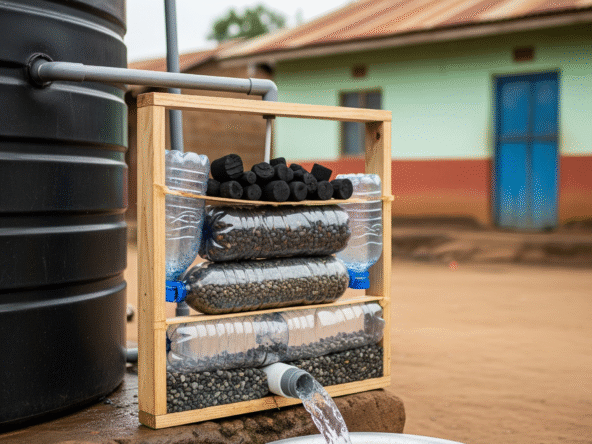With rising utility costs and irregular water supply across many Kenyan towns and estates, efficient water use has become a priority. While most households invest in water storage tanks, few take the next step recycling overflow water or greywater from household activities.
By integrating overflow systems with greywater reuse setups, you can dramatically reduce water waste, lower costs, and create a sustainable water strategy that works year-round even during dry spells or rationing.
1. What Is Greywater and Why Use It?
Greywater is lightly used water from sources such as:
- Bathroom sinks and showers
- Laundry machines
- Kitchen rinsing (filtered where possible)
It can be reused for:
- Garden irrigation
- Toilet flushing
- Cleaning driveways or floors
Instead of letting this water go to waste, it can be safely stored and used, especially when paired with overflow recovery systems from tanks or rainwater catchments.
2. Common Overflow Issues in Kenyan Homes
Water tanks especially in Nairobi’s flats, peri-urban homes, or rental compounds often overflow due to:
- Night refilling without a timer
- Faulty or absent float switches
- Poor drainage planning
- Heavy rains in areas using rooftop harvesting
In most cases, this leads to runoff flooding compounds, wasting water and damaging landscaping. Learn how this affects driveways in Compound Paving Alternatives in Kenya.
3. How to Capture Overflow Water
To make use of overflow water:
- Connect overflow outlets to collection barrels, sumps, or secondary tanks
- Use lined trenches or vegetation beds to direct overflow into useful zones
- Install gravel drains around tank bases for safe diversion
You can also design landscaping with integrated channels, as shown in Integrating Outdoor Seating with Drainage Solutions.
4. How to Set Up a Greywater Reuse System
A greywater system includes:
- Filters: Basic mesh or gravel filters remove hair and soap
- Storage: Keep in a sealed container or poly tank, ideally used within 24 hours
- Distribution: Use gravity to feed greywater to toilets, flower beds, or lawns (as covered in Gravity-Fed Tank Setups in Kenya)
Avoid mixing with black water (sewage), and label systems clearly for safety and maintenance.
5. Why Combine Overflow with Greywater?
Integrating these systems:
- Captures more free water from tank overflows and rainfall
- Supports dry-season landscaping without extra utility costs
- Helps manage drainage in sloped or paved compounds
- Supplements greywater supply when washing activity is low
This is especially beneficial when paired with drought-tolerant landscaping from Best Plants for Dry-Season Gardens in Kenya.
6. Add-Ons to Improve Performance
- Install overflow alarms to know when to redirect water (Alarm Systems for Tank Overflows)
- Use manual diverter valves to control where overflow and greywater go
- Add pre-filters or mini sediment tanks before greywater enters storage
- Combine with smart timers and pumps for automated reuse cycles
7. Ideal Setups for Kenyan Households
This hybrid system works well for:
- Homes using rainwater harvesting tanks
- Estates with frequent refill cycles
- Farms or homes with gardens and livestock
- Rentals looking to stand out with water-efficient designs (see Interior Finishes That Attract Tenants)
Combining your tank overflow system with a greywater reuse setup is one of the smartest ways to manage water in Kenyan homes today. It requires only modest investment but delivers lasting benefits less waste, lower bills, and improved water independence.
Explore More:


